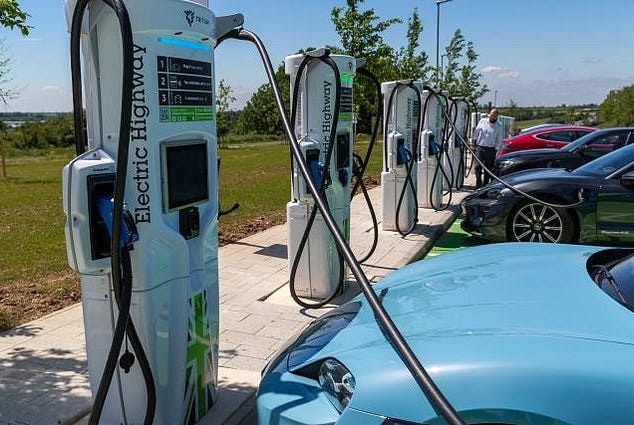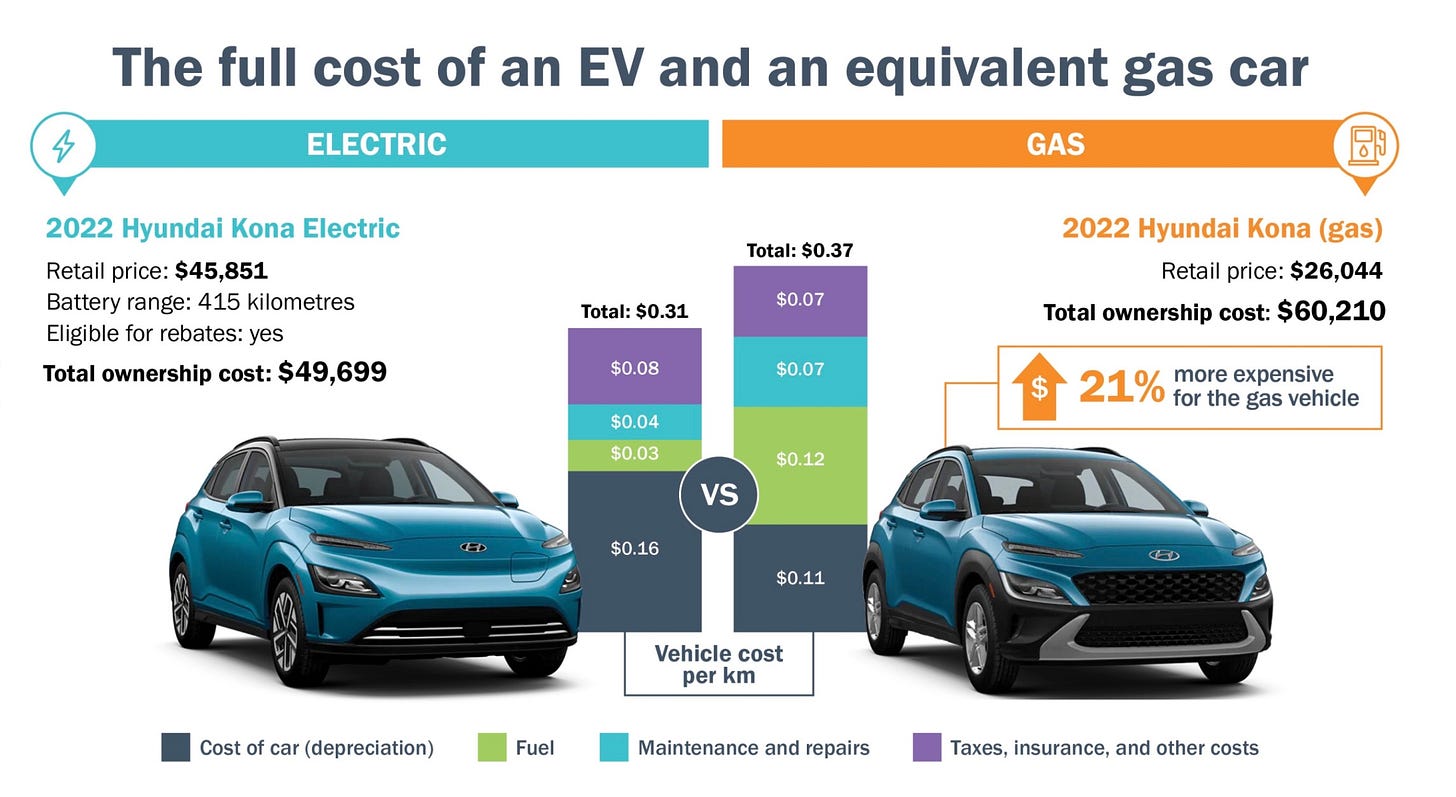We recently gave away our hybrid car to a family member and bought a used 100% electric EV. There’s a lot to like about EVs. Everyone loves how quiet they are, and how smooth the ride is.
We charge at home using a regular outlet. It would take something like 30 hours to completely charge the battery. However, we don’t fully drain the battery. Instead, we let it get down to a 30% or 40% charge and then top it up overnight.
In the morning there’s an 80% charge and a range of 250 km. That’s way more than we need since we might drive 25 to 35 km in a day. And we don’t use the car every day since we live in a city and prefer to walk, bike, or take transit.
Most vehicles are parked 95% of the time. Even someone driving 3 hours a day to work means the vehicle is parked for 21 hours. More than enough time to top up a battery.
Need-to-Know: EVs surprisingly cheap to operate
What is truly astonishing is how cheap it is to charge at home. We spend 1.9 cents on electricity to travel a kilometer. A fossil-fuelled vehicle pays at least 7X that much.
Here’s another way to look at the fuel costs savings:
A full-size SUV or light truck costs at least $120 to fill with a gas price of $1.70/liter.
A more efficient compact vehicle might cost $80 to fill.
Our EV costs $10.50 to have enough power to go the same distance as $120 or $80 fill.
Calculation: Average gasoline vehicle fuel efficiency = 8.6 liters/100 km. Gas price $1.70/l. That works out to 15 cents per kilometer traveled. We pay 10.3 cents a kilowatt hour for electricity, so our cost is 1.9 cents per kilometer. And it’s 92% from zero-carbon sources. Need-to-Know: 'Electric Car Day' means 5 months of free driving
July 16 is the day when a gasoline driver will have spent more on fuel than the average EV driver will for the entire year, according to a UK study. So, effectively 5 months of free driving compared to using a gasoline vehicle. When that day occurs varies according to the cost of gas and electricity.
I’ve spoken to several EV owners. They are very happy with their vehicles, and say their EVs work well and require hardly any maintenance. They aren’t worried about their batteries since there’s an 8- to 10-year warranty depending on the manufacturer.
Need-to-Know: Public charging network needs improvement
The one issue is the relative lack of public charging. We have been building gasoline stations for the past hundred years. There are tens of thousands of gasoline pumps, and sometimes gas stations on every corner of a busy intersection.
While EV charging stations take very little physical space, there simply aren’t that many. Worse, there are three different types of charging standards. For instance, I can’t use Tesla chargers because I don’t have a Tesla.
EV manufacturers have been slow to agree on a universal standard. However, it now looks like Tesla’s North American Charging System (NACS) standard will be the winner. (In North America.)
Need-to-Know: The EV Uprising is here
EV sales accounted for one in every seven cars sold globally in 2022 – up from one-in-70 just five years earlier.
One in four or five cars sold worldwide will be an EV this year
In 2023 EVs accounted for 15% and 10%, of all cars sold in Viet Nam and Thailand.
Almost 1 in 3 vehicles on the roads in China by 2030 is set to be electric,
Almost 1 in 5 cars on the streets in both the United States and the European Union will be EVs in 2030
If countries following through on their announced energy and climate pledges are met in full and on time, two in three cars sold will be electric by 2035, according to the latest report from the IEA.
Need-to-Know: Lots of anti-EV propaganda out there
Here’s a reliable and comprehensive debunking of 21 EV Myths.
Hope this has been of interest.
Until next time, be well.
Stephen
P.S.
Here’s a Canadian comparison of the total cost of ownership:







we bought a used Leaf EV last fall, nice to drive for sure. But I regret it. They go off like a bomb in a collision, and in some areas, firefighters and EMS won't go near if there is flame or smoke. Also, no way there is enough mineral of various kinds to support the turnover of the ICE fleet to EV and actually the EV 're volution' is just accelerating consumption of finite resources. I'd go with the Cuban model of extended useful life for all such products. Also, if the grid goes down due to SWE, we're not going to be charging even our phones, let alone our cars.
Just sayin'
ig